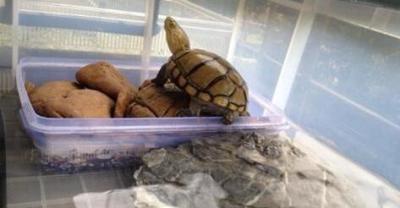Matters needing attention in small-tailed Han sheep breeding!
1. Build a good enclosure
The small-tailed Han sheep's enclosure should be built in a place with high and dry terrain, good drainage, adequate lighting, cold protection in winter and spring, cooling in summer, good ventilation and no pollution. Sit in a semi-enclosed plastic greenhouse from north to south or west to east. The area of the enclosure should be spacious, can move freely, or can be divided into small circles.
2. Feeding parapet
The feeding railing should be set up in the sheep house or playground, the height of the feeding railing is 0.5-1 meter, the distance between the left and right sides of the ewe feeding railing is 15-17 cm, and the distance between the left and right sides of the ram-feeding railing is 25-30 cm, it is appropriate for the sheep to stick out its head to feed. The fence can be made with wooden sticks and so on.
3. Set up a sports ground
The playground of the small-tailed Han sheep had better be located next to the sheep house, with a door connected with the sheep house to facilitate the free entry and exit of the sheep. The ground of the sports ground is flat, the drainage is smooth, and there is plenty of sunshine and shade.
4. Food trough
The trough can be made of brick and cement or wood. The trough is 30 cm deep, 25 cm wide at the top and 18 cm at the bottom, 40-50 cm high from the ground, and the length of the trough is 50 cm for each adult sheep and 20 cm for lambs. The sink should always be filled with clean drinking water and replaced once a day.
5. Replenish the concentrate
Small-tailed Han sheep have fast growth and high demand for nutrients, so it is necessary to supplement the formula feed with comprehensive nutrition. Feed first coarse feed and then concentrate, feed first and then drink, add less frequently, and feed three times a day in the morning, noon and evening. Feed conversion should be carried out step by step. Young alfalfa, legumes and other forages should not be overeaten to avoid rumen flatulence. It is strictly forbidden to feed poisonous forage such as mildew spoilage, freezing, pesticide residue contamination and untreated germinated potatoes.
6. Provide adequate drinking water
Always provide plenty of clean and fresh drinking water. Don't drink ice water in winter, drink warm water in winter.
7. Disease prevention and deworming
Epidemic prevention is generally carried out once in spring and autumn, from March to April in spring and from October to November in autumn. At the same time, sheep manure was accumulated and fermented for 30 days to kill parasites and cut off the route of transmission. Whether it is epidemic prevention or deworming, pregnant ewes should be used with caution so as not to cause abortion.
8. Sanitation of sheds
Where the sheep shed is narrow, dirty, dark and humid, stuffy and poorly ventilated, it can cause a large number of lamb disease. Therefore, it is necessary to do a good job in shed hygiene and disinfection of the surrounding environment and appliances. Keep the sheep house warm in winter and cool in summer as much as possible, and keep it dry and clean. After each batch of sheep comes out of the pen, it should be thoroughly cleaned, replaced with new soil, and disinfected. Arbor should be built in summer, warm circle should be adopted in winter to fattening, sheep shed should be clean and hygienic, and the air is fresh. Those who are raised mainly by the house should drive the sheep to the side of the road and exercise by the ditch twice a day for an hour each time.
- Prev

How about raising ducks? Standard procedures for raising ducks how much investment is needed to calculate the profit and cost of raising ducks
In the process of raising ducks, farmers need to follow the following standard breeding procedures for your reference: good duck farming norms require that when engaged in duck production, they should be strictly standardized.
- Next

Knowledge | Culture methods of geraniums
Geranium likes warm climate and fertile loose soil, is resistant to drought and waterlogging, grows poorly in hot summer and high temperature, and is in a semi-dormant state. Today Huahua will teach you something.
Related
- On the eggshell is a badge full of pride. British Poultry Egg Market and Consumer observation
- British study: 72% of Britons are willing to buy native eggs raised by insects
- Guidelines for friendly egg production revised the increase of space in chicken sheds can not be forced to change feathers and lay eggs.
- Risk of delay in customs clearance Australia suspends lobster exports to China
- Pig semen-the Vector of virus Transmission (4)
- Pig semen-the Vector of virus Transmission (3)
- Five common causes of difficult control of classical swine fever in clinic and their countermeasures
- Foot-and-mouth disease is the most effective way to prevent it!
- PED is the number one killer of piglets and has to be guarded against in autumn and winter.
- What is "yellow fat pig"? Have you ever heard the pig collector talk about "yellow fat pig"?

